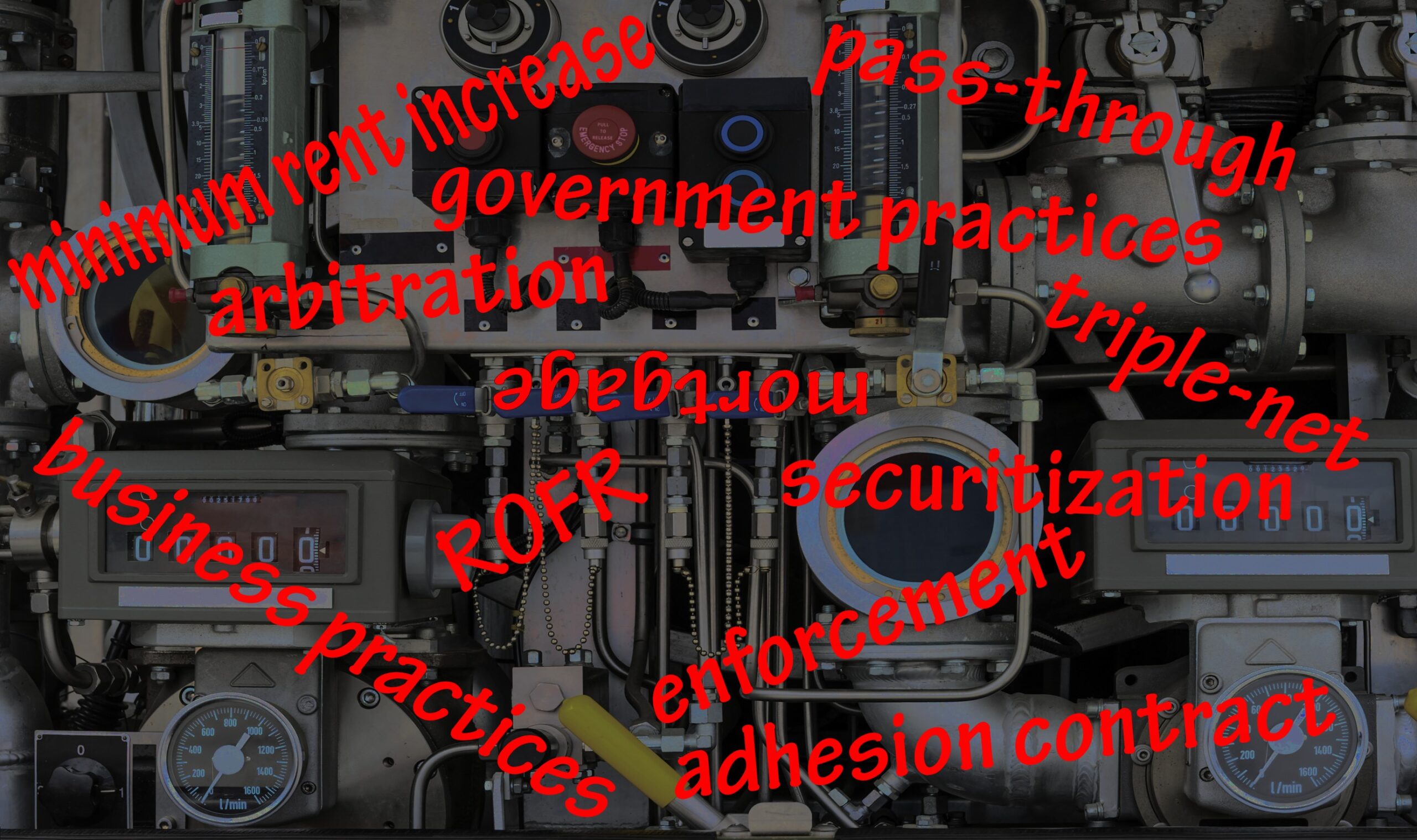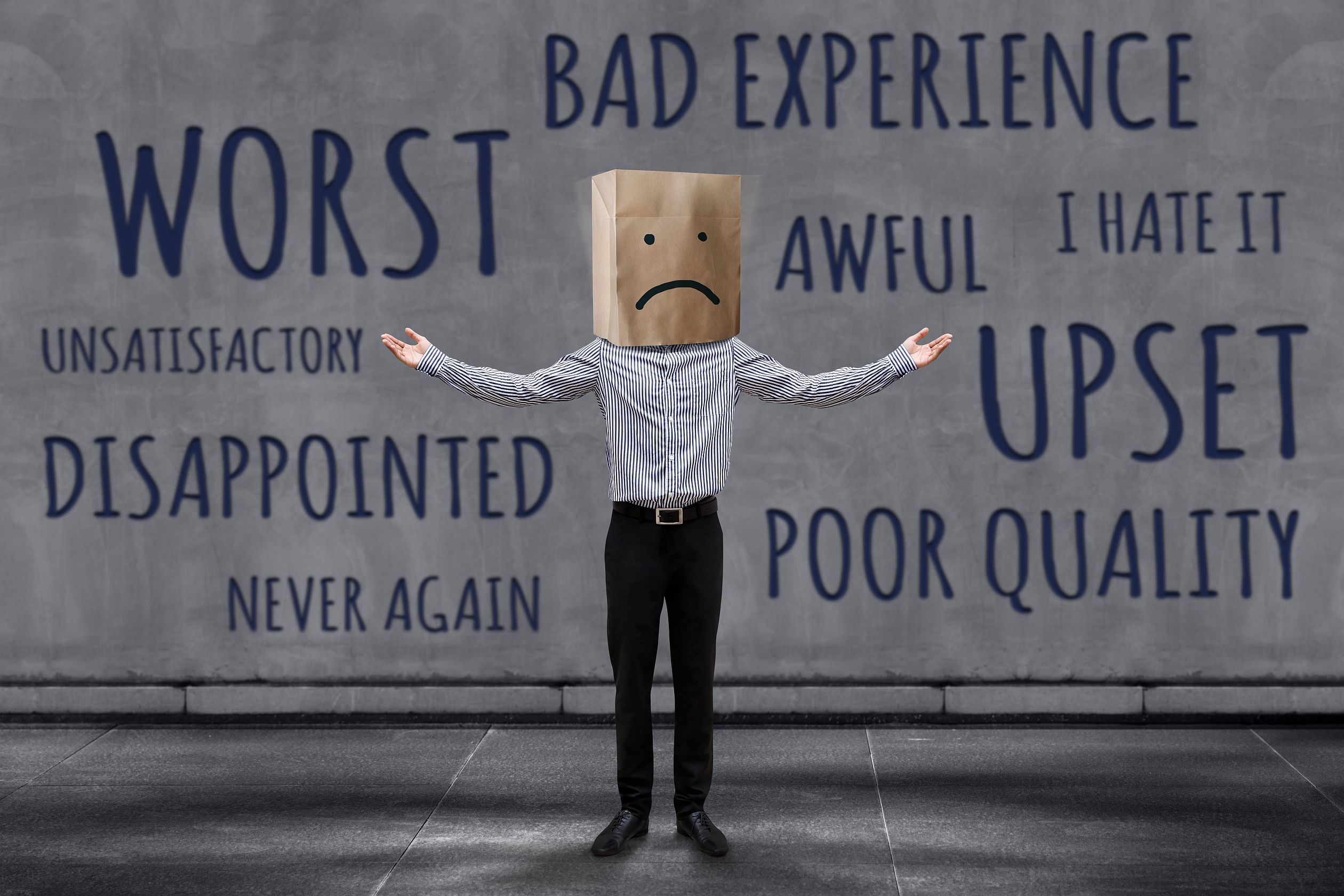The Park Industry – How Your Housing Works
Part 2 of 4

Complicated lease terms homeowners may innocently agree to are explained in the glossary
By:
– Turning Points –
Large size homes, permanent homes, immobile homes, on-site home sales and the end of mobile home park construction
Links to sections (tap to open)
Comfort Levels Rise
Some tourists liked living in their travel trailers, or found it was the best option at the time, and they planted their roots in the park. This could be good for both the occupant and the park owner. The traveler could settle in the park and the landlord would have the rental lot permanently filled, generating uninterrupted cash flow.
Another change was the gradual growth in the size of the homes. As homes became larger and heavier, they became less mobile. One way to identify manufactured mobile homes is that they are not built for moving around, but are built to stay in one place – often in a park.
The Special Features of Manufactured Mobile Homes
As the industry progressed from vacation trailers to actual houses, the park business changed. Whether the changes occurred by design or natural evolution is not as important as what they meant.
In parks, buying a manufactured mobile home is a different process compared to RVs or travel trailers. New home buyers are not involved with moving a new home into a park. These larger homes can be bought at the factory or showroom, but if a park lot is available, usually a sales agent or park owner moves a newly-built home to the park’s site. From there, they sell it to a potential resident because it is easier to sell homes at their permanent locations. Real estate professionals and special agents can list and show the homes in a similar way to site-built homes.
The homeowner may live in the home for some time, and, when he decides to move, will put the home up for sale, usually employing a sales agent as with site-built houses.
These factors; permanent immovable housing, larger housing and in-park sales by real estate agents separate the manufactured mobile home business from the recreational trailer and RV business. An old-fashioned “trailer park” may contain small, narrow recreational travel trailers that once roamed the highways, but true “trailer parks” with permanent travel trailers are becoming increasingly rare. Manufactured mobile homes are never built to travel. They are not “trailers” and they do not fill “trailer parks”.
Few new mobile home parks have been built since the 1970s. Zoning laws, financing and other factors have made it harder to build new parks. With short supply, parks may be full to capacity and competition reduced as affordable housing needs grow.
To recap, the trend from smaller to much larger dwellings brought reduced mobility until the larger homes became permanent in their parks. With the larger sizes, homeowners could have good-sized living rooms, three bedrooms, a dining room, two baths and more. But now the home owners would find it too expensive and impractical to try moving the large building once it had settled onto a park lot.
The Parks Are No longer a Seasonal Business
As the manufactured housing’s size and purpose changed, so did the park business. The park land leasing business split into servicing two customer bases. Some landlords continued to cater to vacationers and temporary residents on brief stopovers. These customers arrived and departed with their vacation trailers and RVs of various types.
Other landlords focused on the manufactured mobile home park business. They made the large single-wide, and increasingly double-wide manufactured homes the only houses in their parks. A few parks became mixed-use, with a section for travelers and RVs and another section for manufactured mobile homes. With manufactured mobile homes, park landlords could rely on more predictable income streams from more permanent customers.
A Better Housing System Held Back by Old Notions
As the manufactured housing industry grew from short-stay, cramped travel trailers to spacious double-wide permanent housing, something that should have happened, didn’t happen enough. Often, the legal structures and thinking did not change to reflect and support the newer housing system and the need for affordability. Too many old concepts of law and notions about housing continued as if the homes were merely trailers that could be hooked to cars and pulled away on a moment’s notice.
As Esther Sullivan, author, Manufactured Insecurity, points out in an interview: “It’s also a source of housing we have “othered” for years in our culture. And that’s why, I think, these residents have been so vulnerable. Because we haven’t cared”. Mobile homes were often misconceived as “trailers” and mobile home parks equated with slums.
Manufactured mobile homeowners became heavily invested in a comparatively large house that they could not move away from rented land. The industry had painted the oblivious homeowner into a corner. The homeowner’s security and predictability rested upon an unwritten “social contract” made with potentially changeable landlords, leaving the homeowner subject to exploitation and legal and financial binds.
Mobile Home Owners Get Blamed for Conditions Beyond Their Control
Once the public and leaders are conditioned to believe mobile homes are trailers and the parks are slums, it becomes easy to blame the inhabitants for any neglected conditions in their park. This guilt by association looms large but minimizes the truth that the land is not owned by the residents but is the landlord’s responsibility.
Mobile home parks often have a Rules and Regulations document that new residents must agree to. The Rules and Regulations set minimum standards for house upkeep, rented lot cleanliness and other neighborly behavior. But only the landlord can enforce these standards by monitoring his park and citing the offenders.
While some homeowners are tidier than others, if you see a deteriorated park, you may have to blame the park’s management. It can be more profitable to cut staffing and maintenance expenses, including regular management duties for monitoring park conditions and timely response. Mobile home owners pay for good park management with their rental expenses, whether they receive it or not. A run-down park has become that way while being managed, or neglected, by the landlord.
The Parks and Homeowners Get Undeserved Stigma
Many mobile home parks are attractive and 5-star, but outsiders often disparage them anyway. This undeserved stigma may be an important component of the real estate industry’s profit system. When an otherwise respectable and, in some ways, superior class of non-subsidized housing is disparaged, it pressures housing seekers to avoid it.
With their options limited by the industry and negative social notions, housing seekers are encouraged to buy more expensive tract homes. These higher-cost, site-built homes in tracts generate more profits for the housing industry and create an exclusivity in “superior” neighborhoods while confining homebuyer options. Growth-addicted cities often oblige with restrictive zoning that excludes affordable housing, and some city leaders may encourage park closures to enable profitable redevelopment. Together, these factors create unjust social pressure against affordable housing and manufactured mobile home parks.
Mobile Homes are Real Houses
While it is true that manufactured mobile homes are tied to rented lots like trailers, they have serious fundamental differences. Manufactured mobile homes are more expensive than trailers and are financed through mortgage-style lending. They are much larger, permanently placed, and sold via real estate agent marketing.
Manufactured mobile homes have trappings that trailers do not. Their gardens, decks, sheds and car parking began to resemble site-built houses. Home maintenance and repair is conducted like that of site-built homes, often using ordinary housing materials and construction methods.
Today, these larger homes require conventional furniture that would never fit into a trailer. They have cathedral ceilings, laundry, 2 baths, dining and living rooms, multiple bedrooms, full kitchens with dishwashers and wall-to-wall carpeting. Some interior photos of manufactured mobile homes are indistinguishable from those of site-built homes.
Video: Tour of a manufactured home interior (AKA “mobile” home)
Manufactured mobile homes did not become a new form of housing. Instead, they morphed to imitate an existing form of housing, that of conventional site-built homes. Unfortunately, this progress happened without the advancement of the laws, appreciation, protections, recognition and valuation that were already granted to site-built homes.
“It’s also a source of housing we have othered for years in our culture. And that’s why, I think, these residents have been so vulnerable. Because we haven’t cared”.
Esther Sullivan, author, Manufactured Insecurity
(from interview)
At a time when ominous pollution and global warming are in the news and housing densification is needed, the world should be welcoming and championing these low-impact, right-sized homes. Yet some cities detest their presence. Conventional notions are that they are undesirable, undeserving and low-class. A great injustice is being done, not only to manufactured mobile home owners but also to the health of society and the very earth we depend upon.

In Part 3, the action begins as park ownership makes a dramatic change.
Parks first served travelers with towable trailers. But the fundamentals changed to permanent residents in permanent houses that were too big to move.
Dramatic changes: Trailers become small houses; parks become settled housing tracts; residents become permanent, tax-paying citizens. But the old laws and thinking remain – holding back progress.
The park founders sell to large profit-seeking corporations that dramatically change the quality of life and stability of the manufactured housing tracts.
Homeowners and cities seek good solutions. Manufactured Home Parks provide good solutions—when not held back or exploited





